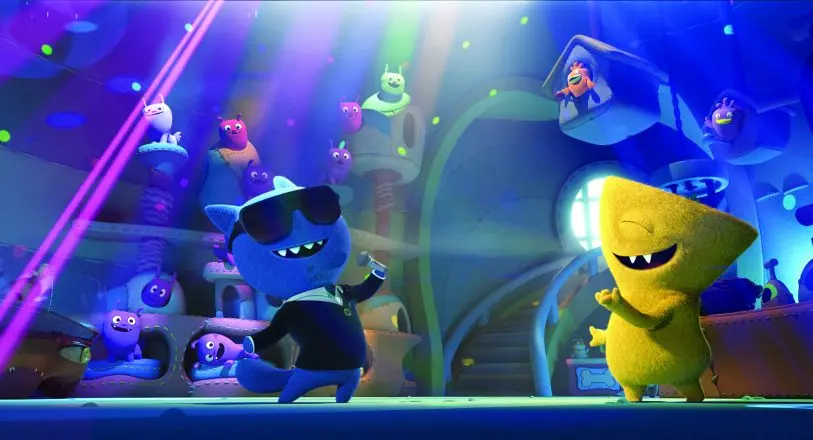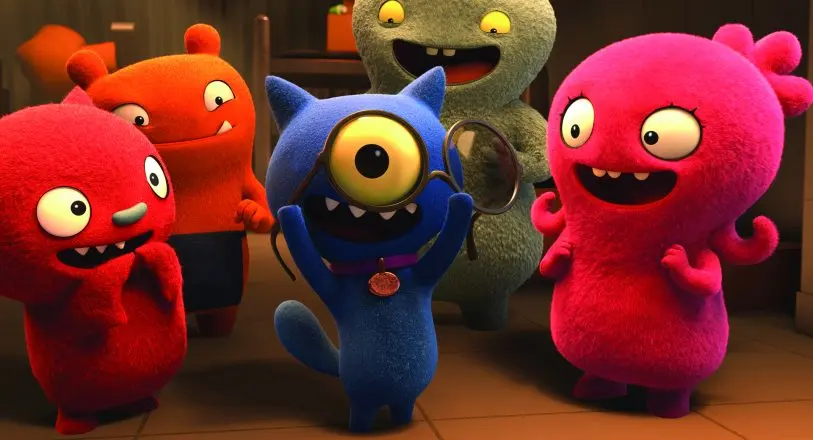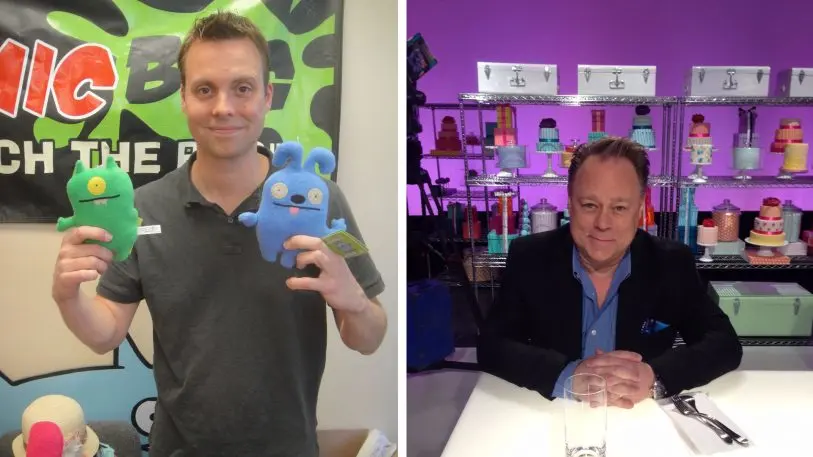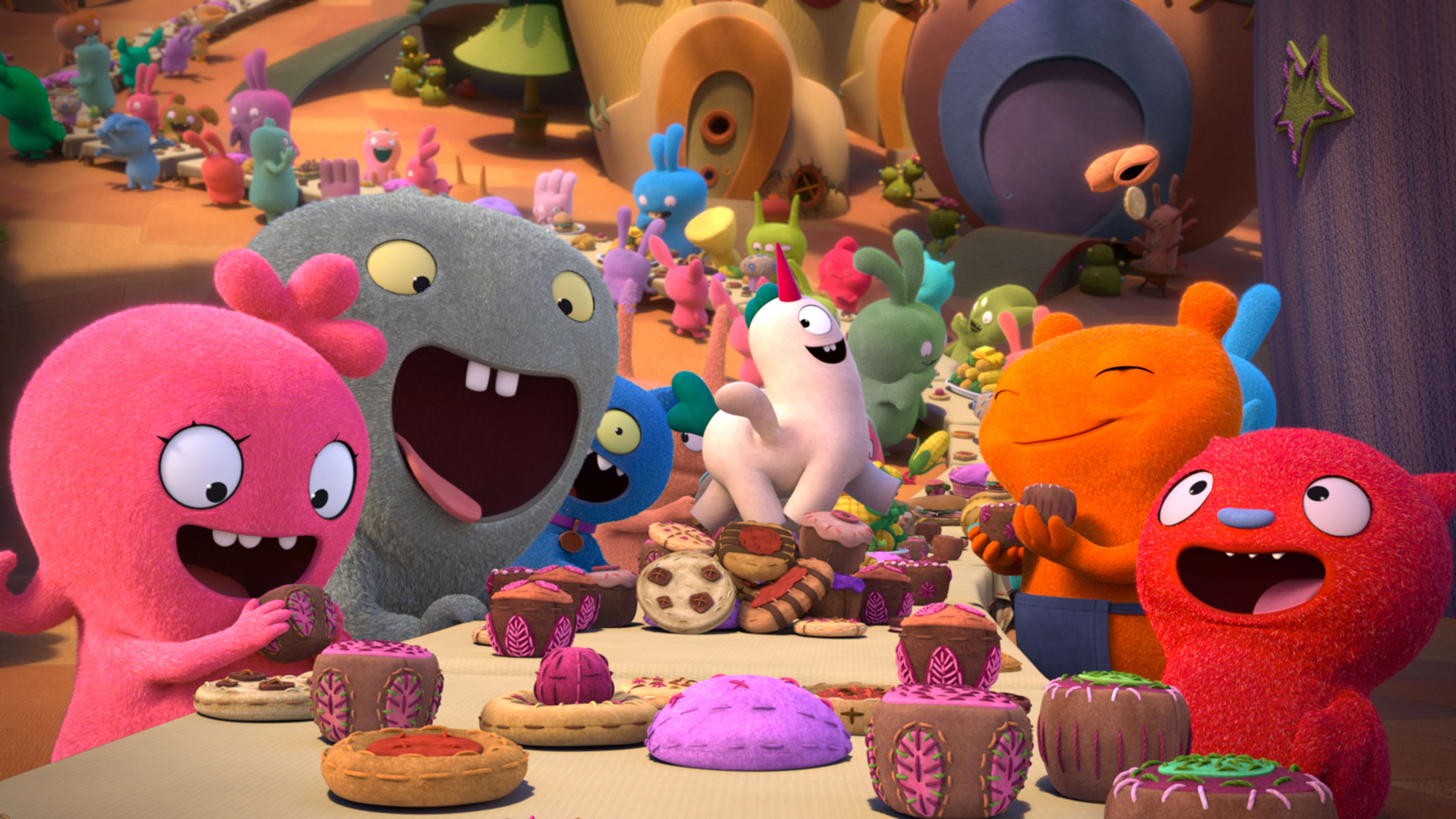The movie UglyDolls, which opens Friday, has a catchy, power-ballad heavy soundtrack featuring Kelly Clarkson, Nick Jonas, and Pitbull and an aggressive merchandising push led by the brand’s namesake plush toys. There are Ugly Dolls T-shirts, figurines, Pez dispensers, nightgowns, blankets, and even Happy Meals, all featuring the brightly colored, doughy creatures with adorable fangs. A Hulu series is also in the works.
In other words, it has all of the hallmarks of trying to achieve a Trolls-like trajectory to infiltrating every crevice of popular culture.
But this fusillade of products is a new phenomenon for the Ugly Dolls brand, whose creator, David Horvath, has lovingly–and savvily–protected his creations from mainstream ubiquity for nearly 20 years now, helping ensure a cult, insider-y quality to the toys.
Indeed, it’s only recently that Ugly Dolls products have been available via large toy retailers. As Adam Fogelson, chairman of STX Films, which is releasing the movie, said at the UglyDolls premiere: “It’s a specialty brand, but the world treats it like a mega brand.”
Horvath says he has turned down movie offers for UglyDolls for years, wanting to avoid what he calls a “Hollywood cash grab,” adding that “It was 20 years of almost borderline being a bad father with a baby on the way, saying no to millions.” Instead, he focused on building up the toys’ reputation among high-end, design-minded consumers.
As of this weekend, Ugly Dolls will be firmly entrenched in the mainstream culture, via a feel-good kids’ movie about a brash, pink Ugly Doll named Moxy (voiced by Clarkson) who, along with a rag-tag band of misfits, stands up to a group of “perfect” dolls, ultimately proving that beauty comes in all shapes and sizes.
So what made Horvath say yes to this pitch from STX Entertainment, an independent studio behind such films as Mile 22 and I Feel Pretty who’d be making its first animated feature? He, UglyDolls director Kelly Asbury, and Oren Aviv, president and chief content officer at STX as well as a producer on the film, recently spoke to Fast Company about the journey from toy to screen.

Staying in the specialty lane
The story begins in 2001, when Horvath sent a love letter to his then-girlfriend Sun-Min Kim (they are now married) and signed it with a drawing of a quirky creature with big, staring eyes.
“She took one of the funny drawings I was sending and decided to turn [it] into a doll,” Horvath says. He then showed it his friend Erik Nakamura, who ran Giant Robot, a boutique Japanese toy store in Los Angeles, and Nakamura asked for 20. “They flew off the shelves,” Horvath says.
Kim also came up with the toy’s name, which Horvath likens to “the ‘life moment’ that Dr. Phil talks about. That phone call where she uttered the phrase “ugly doll.” Because, right away, it became so solidified. What is ugly? We’d talked about it for years, but at that moment she breathed life into the whole thing.”
As Ugly Dolls gained popularity amongst Giant Robot’s geeky patrons—the store specializes in anime tchotchkes and products by designers such as Takashi Murakami–Horvath and Kim selectively sought to expand the brand’s footprint. They formed Pretty Ugly LLC and began manufacturing the toys in Korea.
But despite this growth, “We really, truly believed in staying specialty,” says Horvath. “Not just mom-and-pop toy shops, but we were always in love with small shops, small neighborhood comic-book stores. In New York, we were sometimes in the MoMA gift shop, at the Whitney, Forbidden Planet (a specialty comic book store). These are the retailers that gravitated toward us and that we are all in love with.
“You couldn’t find them at toy stores, they were at design furniture stores, at certain, exclusive stores in Japan. In Seoul, in the neighborhood of Insadong (where no Western brands are typically sold), we had an Ugly Doll store for quite some time. Hugh Jackman walked in once and everyone freaked out because he posted on Twitter, ‘Hey, I’m here in the Ugly Doll store.'”
Horvath continues, “We wanted our brand to live in these spaces. Not forever, but we felt like we wanted (Ugly Dolls) to live well past our lifetime, and we felt like the only way to really do that was to give it a long, almost 20-year back history.”

Saying no until it was right to say yes
As word of Ugly Dolls spread, Horvath and Kim were approached by producers to bring the toys to the big screen. In addition, advertisers wanted to use the toys to promote products. But there was never any question in their minds: It was a no. “We were literally turning down millions of dollars,” Horvath says.
So what changed? Horvath says that the onset of social media, and watching young kids (he has a 10-year-old daughter) become consumed with it and the aspirational ideals entrenched in so many Facebook and Instagram posts, made him realize that there might be an important message that his toys could convey–i.e., that there’s a beauty in being “ugly” or different or non-conformist.
“You can’t imagine what it’s like to be born into the likes and followers thing,” he says. “When we say “ugly,” it’s not really about physical form. The Ugly Doll brand was more about the inside–the little, funny twists and turns that make you who you are. That needs to come out. That’s the part that makes life the best. We need you to be awkward and quirky and goofy. Those are the things you should not hide or alter. You should not conform.”
The sense that Ugly Dolls might have a greater mission that went beyond amusement coincided with STX’s interest in making a film based on the toy line. Horvath says he felt an alignment with the company, which is relatively new and whose own mission goes against the grain of the major studios, which are almost exclusively dedicated to producing giant tentpole movies based on comic books and super heroes.
“I love the big stuff. I love the superhero movies. But where’s The Paper (the 1994 Ron Howard film)? So they kind of answered that question for us in an interesting way at the right time. I just felt a lot of creative synergy. We just kind of hit it off.”
One major point of alignment was that the movie stress the toy’s message and not just be an opportunity to sell merchandise. “From a moviemaking standpoint, all the conversations centered around character and individuality and acceptance,” says Aviv. “Those themes were not only top of mind, but the second and third most important things. We’d discuss, for instance, ideas (for scenes) that might feel too much like a moment to sell toys. So we had some antenna sensors about removing or avoiding as much of that as possible.”
Details that felt incongruous to the theme of inclusivity were nixed. For example, the Moxy doll in the movie is actually named Gorgeous in the toy line. But the filmmakers and studio felt that that undermined the film’s message so they came up with the alternative moniker.
In addition, the character of Wage, voiced by Wanda Sykes, was changed from male to female because, Aviv says, “We wanted to have representation both in terms of diversity, ethnicity, as well as sex. We wanted to make sure we had a full representation across the board.”

Listening to the music
In 2017, it was announced that Robert Rodriguez (Spy Kids) would direct and produce the film. Horvath met with him to discuss character design and other ideas during a few brainstorming sessions, but he says he mainly left the film team to do their thing. That approach remained intact when Rodriguez was replaced by Kelly Asbury, an animation veteran who had directed Shrek 2 and Gnomeo & Juliet.
When Asbury arrived, he says, “There had been some development. The film had a really good beginning, it had the song Couldn’t Be Better, and then they had a great ending. That was really what drew me to the project initially. If we can get from that great beginning to that ending in an entertaining manner, then I think we have a fun little film here.
“What we tried to do was say, ‘Okay, this character everyone’s in love with, Moxy–let’s go and make this an old-fashioned, Hollywood musical.’ That was my idea. I said, ‘We’ve got this great song. Let’s get our songwriters, Chris Lennertz and Glenn Slater, to give us a suite of songs that help tell this story that we want to tell, that was rather complex at the tie. The songs really helped smooth things out and stick to the basic story line. Those great, old musicals, like Singing in the Rain, or any of those movies. They don’t have necessarily a complex plot, but they’re a lot of fun along the way, and you’re entertained. That really was our jumping-off point.”
When Clarkson was cast, the singer, who’s known for her brassy exuberance and has talked openly about body issues, further honed the script. “She came to the recording sessions to read the part and said, ‘Did you write this for me?,'” says Asbury. “There would be times with pieces of dialogue where she’d go, ‘You know what? I think she’d say it differently.’ And she might come out with something completely different, or her phrasing or attitude might be different. So it was that confidence that Kelly has that helped us in writing the character from that point. We were able to really fine-tune things and suit it to Kelly.”
UglyDolls was made in two years, which is lightning speed in the animation world, where features can take up to six years to complete. Asbury attributes this to STX, which operates more nimbly than bigger Hollywood animation studios. “It was refreshing to work at a smaller place,” he says. “There are just a lot of cooks in animated features, and certainly as a filmmaker, I strive to find places where there are as few as possible. STX gave me that. They were helpful, they were supportive, but they didn’t micromanage. It was better than some places, where you have a committee to deal with. That can make the movie very difficult to make.
“We had a deadline and decisions were made,” he goes on. “We didn’t dillydally too much staying stuck in one place. We knew we had to move, we had to get things done. And it forced decisions in a very good way.”
Recognize your brand’s excellence by applying to this year’s Brands That Matter Awards before the early-rate deadline, May 3.
